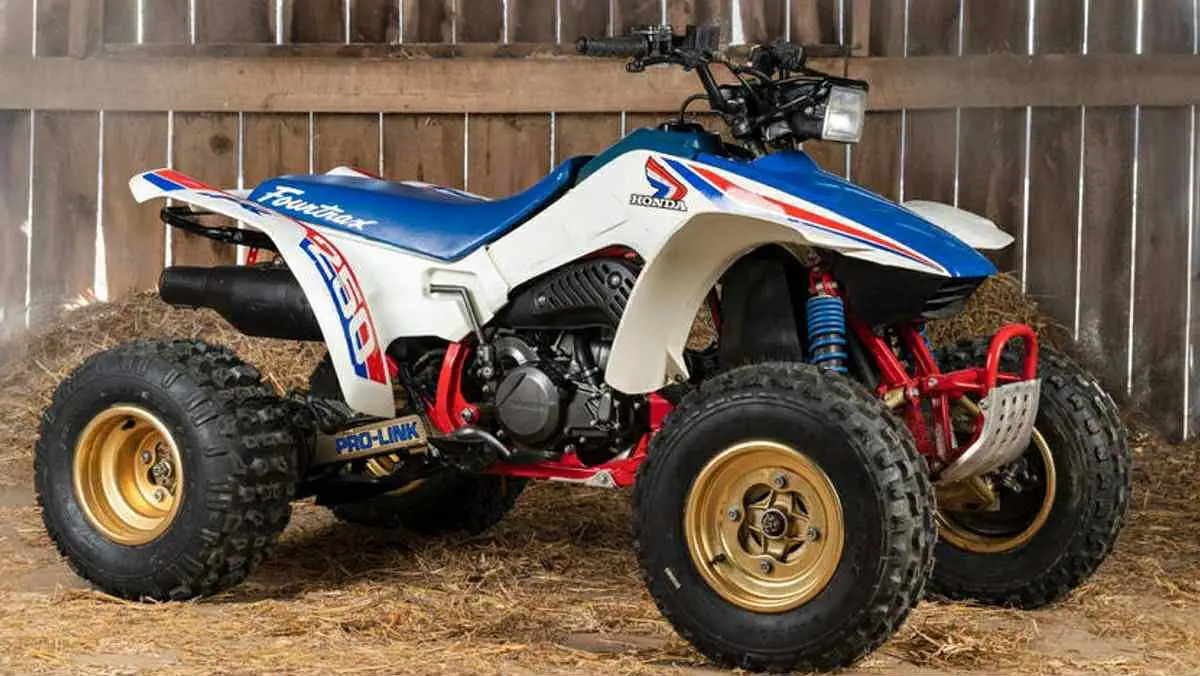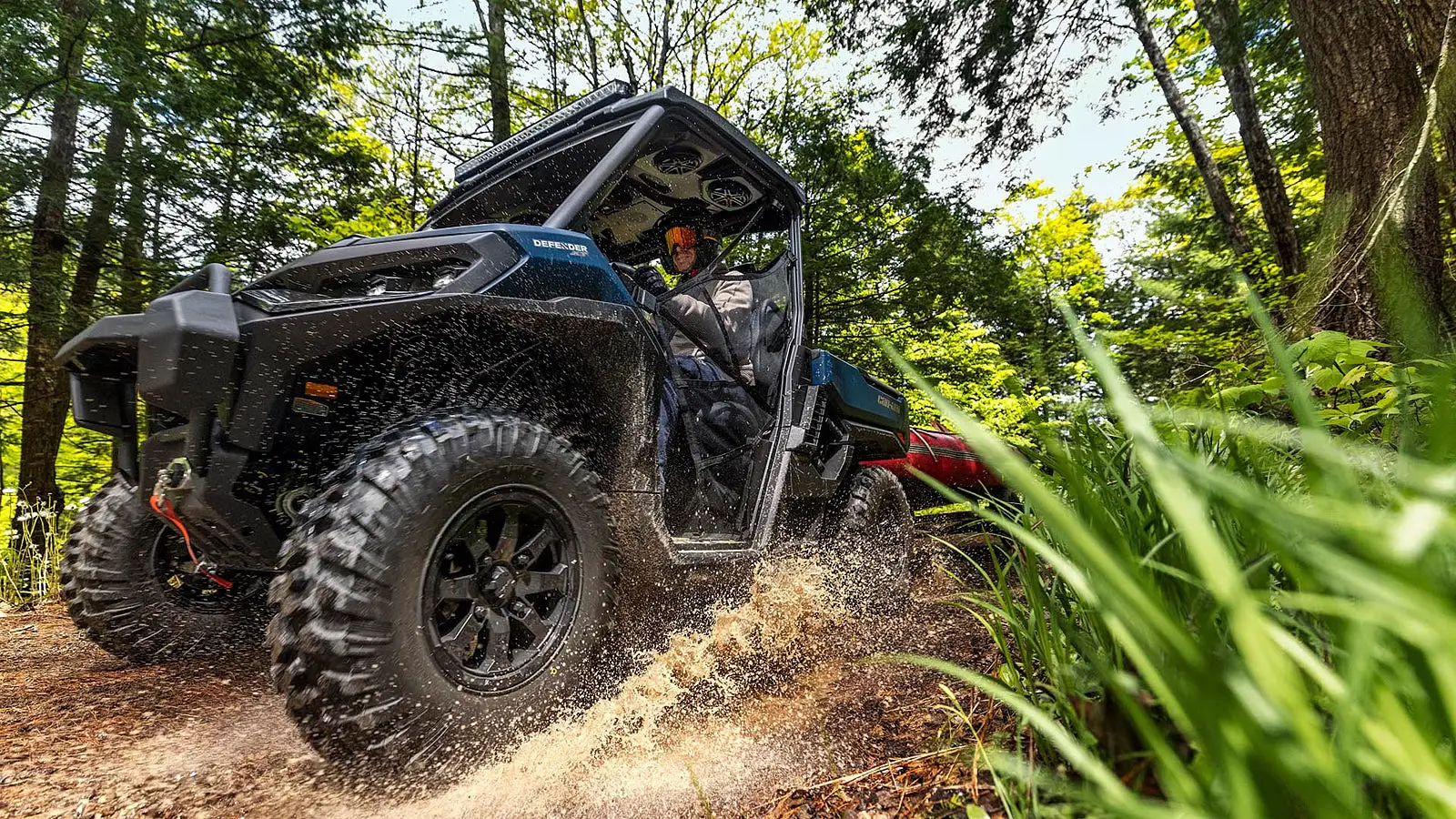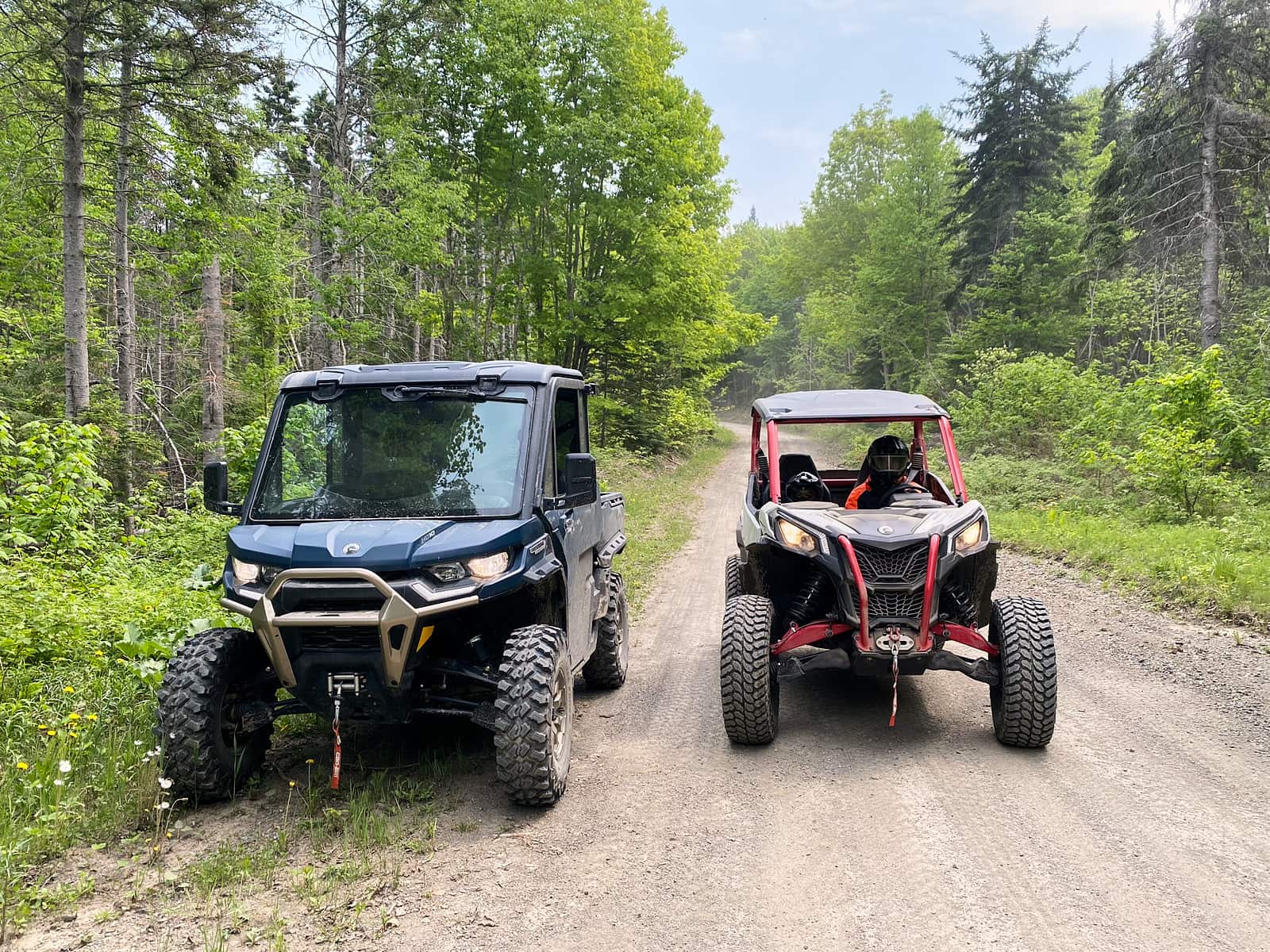Table of contents
ToggleThe Honda TRX 250R, produced between 1986 and 1989, remains one of the most iconic ATVs ever created. A true off-road legend, this model continues to be admired by enthusiasts for its exceptional performance, handling, and longevity. Despite an early end to its production, the TRX 250R remains a benchmark and is often cited as the epitome of the sports ATV. This article explores the history of this cult model, the reasons behind its success, its market withdrawal, and the rivals it faced.
Production History of the Honda TRX 250R 1986: The Birth of the TRX 250R
The Honda TRX 250R was introduced to the North American market in 1986. At the time, the world of sports ATVs was booming, with increasing demand for powerful, lightweight, and high-performance machines. Honda answered the call brilliantly with an innovative design and forward-thinking mechanical features.
This ATV was powered by a 246 cc liquid-cooled 2-stroke engine, a manual transmission, and a lightweight steel chassis. Indeed, it presented outstanding handling and a dynamic feel perfect for racing, technical trails, and sand dunes.
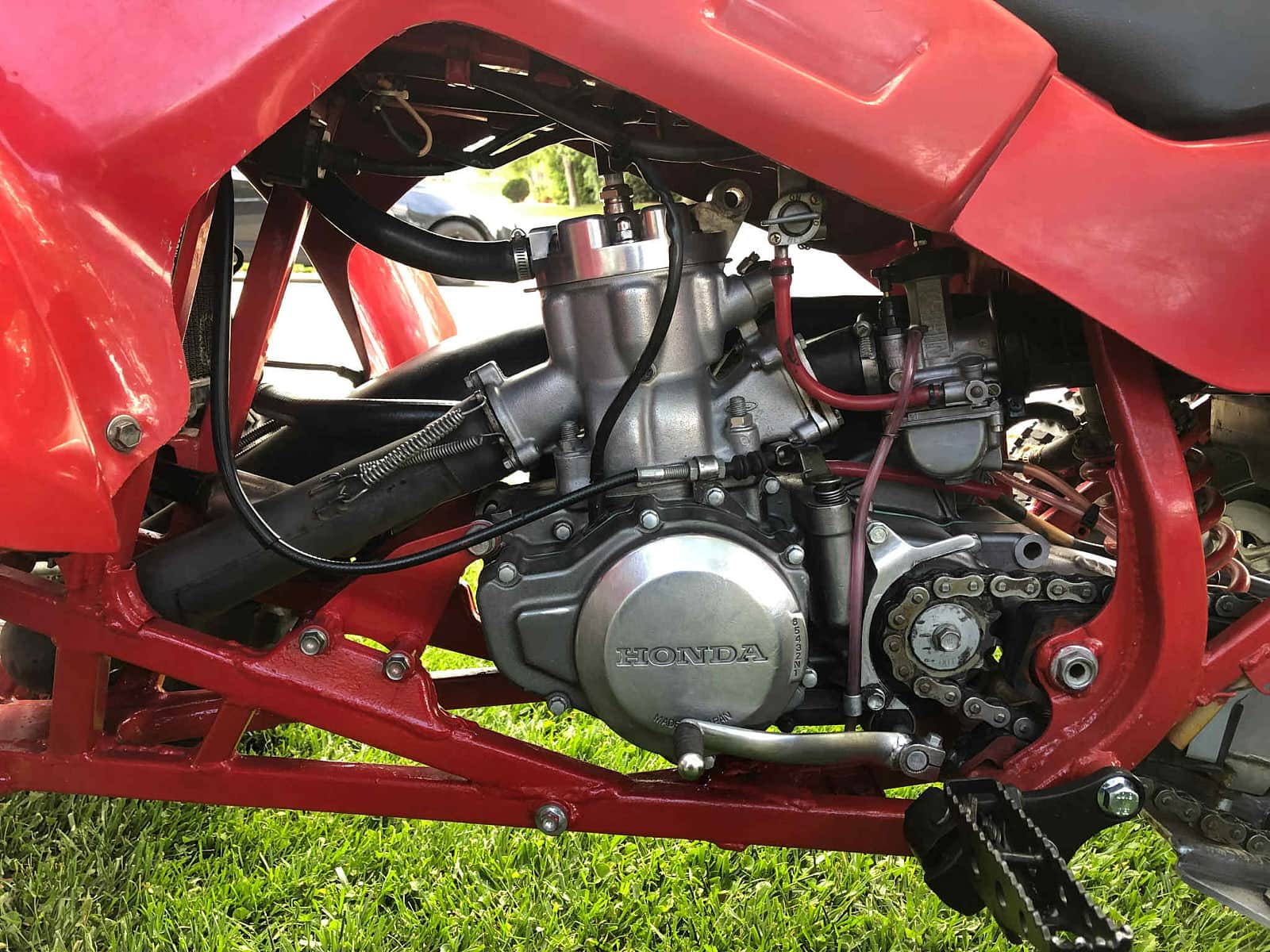
1988: Lighter and More Powerful
In 1988, Honda implemented several technical improvements, modifying the TRX 250R’s compression ratio to boost engine power. The company also shaved 25 lb off the frame compared to earlier models, increasing its competitive edge in the sport ATV segment. The aluminum swingarm was shortened, and the wheelbase slightly extended to shift the quad’s weight rearward. The headlights were moved from the handlebars to the hood—this would be the last major change for the year. The 1988 TRX 250R was fitted exclusively with red fenders.
1989: The Final TRX 250R Edition
By 1989, the TRX 250R was one of the most popular quads on the market. That year brought few updates, though a needle bearing was added at the clutch pressure point to enhance stability on rough terrain and racetracks. Collectors and owners will note that the final TRX 250R was available in white.
Production of the TRX 250R officially ended in the U.S. in 1989, though the model continued to circulate on the secondary market. While Honda ceased production, some countries continued to import or sell from existing stock into the early 1990s—proof of this model’s enduring popularity and ruggedness.

Why Did Honda Discontinue the TRX 250R?
The end of the TRX 250R’s production in 1989 wasn’t due to waning popularity—in fact, quite the opposite. Several external factors led to its withdrawal:
Environmental Regulations
Despite its performance, the 2-stroke engine was criticized for its emissions. New environmental laws, especially in California and Canada, pushed manufacturers to move toward cleaner, 4-stroke engines, which were often less explosive in power.
Legal Pressures
By the late 1980s, sport ATVs faced criticism over safety concerns. Numerous accidents led to lawsuits against manufacturers, prompting Honda to reconsider its strategy.
Strategic Market Shift
Honda decided to pivot toward more family-friendly and versatile models, focusing less on competition and more on a broader audience.
Despite its discontinuation, the TRX 250R never left the hearts of enthusiasts—in fact, its legend only grew from there.
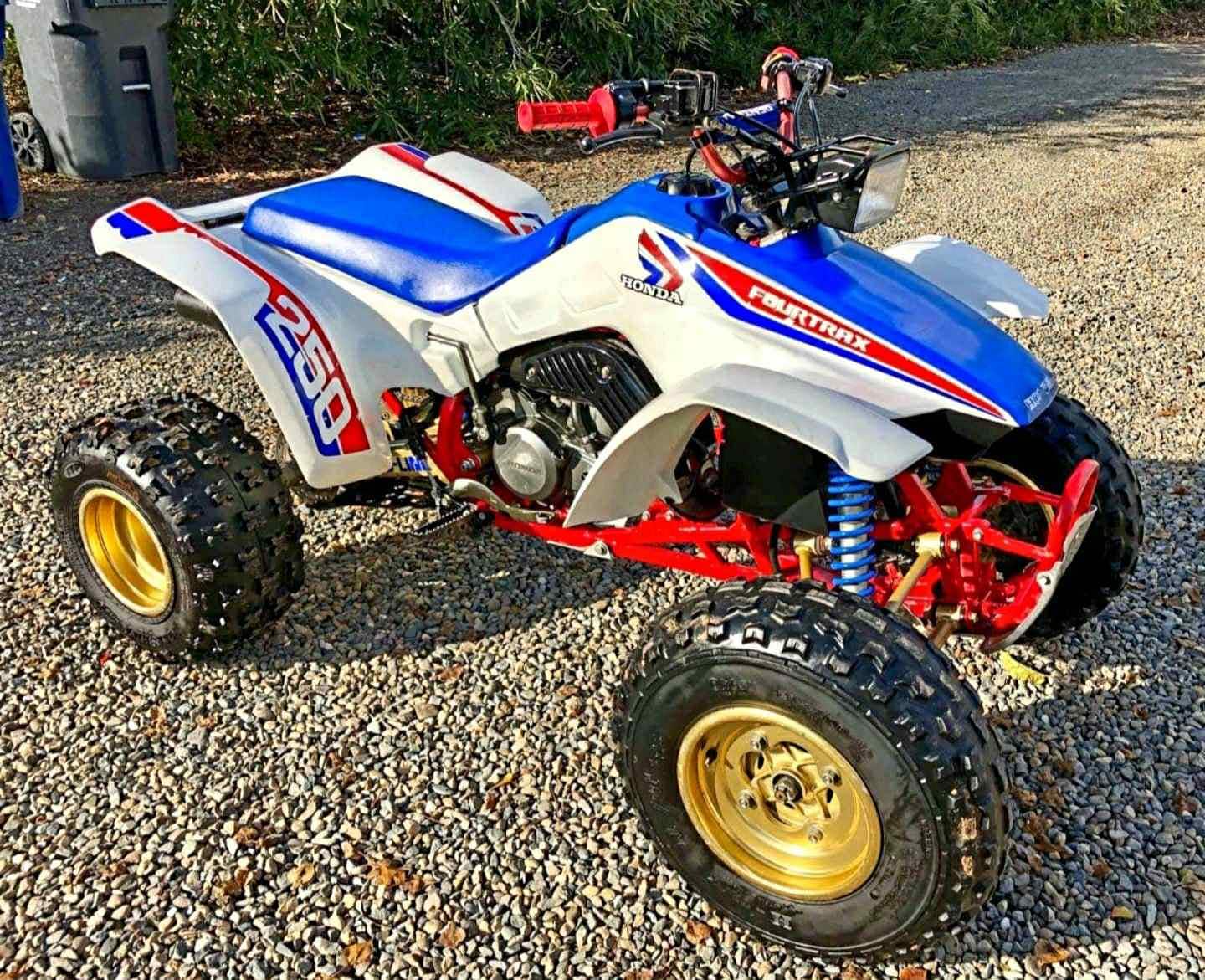
A Lasting Legacy: Why Is the TRX 250R Still So Iconic?
The Honda TRX 250R is considered one of the greatest sports ATVs ever made for several reasons:
Exceptional Performance
The 2-stroke engine delivered snappy, immediate power—ideal for racing and aggressive riding. Paired with a rigid yet lightweight chassis, it presented a level of responsiveness that remains unmatched even decades later.
Superior Handling
With independent front suspension and a high-quality rear swingarm, the TRX 250R absorbed bumps with ease while staying incredibly agile. It excelled in tight turns and diverse terrain.
Reliability and Ease of Maintenance
The TRX 250R engine was relatively simple to maintain. Spare parts, though becoming rarer today, were widely available for years—allowing many of these quads to stay trail-ready without much hassle.
Community and Culture
A true TRX 250R culture has developed over the years. Many clubs, forums, and events are still dedicated to the model. It remains a fixture in vintage ATV competitions, and several companies continue to produce custom or reproduction parts for restoration and modification.

Top Rivals of the TRX 250R in the 1980s
At its peak, the TRX 250R faced competition from several rivals—though few matched its blend of performance and popularity. Among the most notable:
Suzuki LT250R (QuadRacer)
Launched in 1985, the LT250R was one of the TRX 250R’s earliest serious competitors. With a lively 2-stroke engine and aggressive styling, it attracted racers—but its chassis was less refined, and reliability was more hit-or-miss.
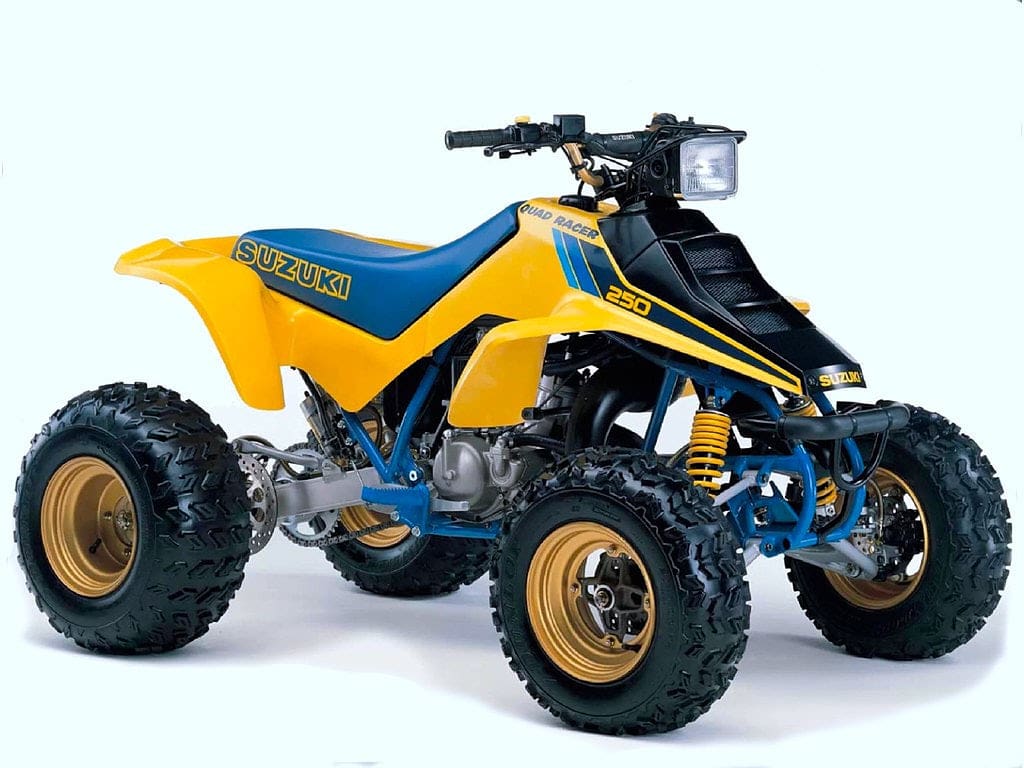
Kawasaki Tecate 4
With a 250 cc 2-stroke engine, the Tecate 4 developed solid power. However, its heavier build and less nimble handling kept it from truly challenging the TRX 250R.
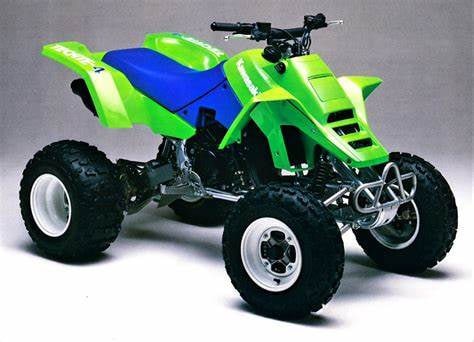
Yamaha Banshee 350
Though it arrived a bit later in 1987, the Yamaha Banshee 350 posed a serious threat. Its twin-cylinder 2-stroke engine, derived from the RD350, was extremely powerful. Still, the Banshee was better suited for straight-line speed and dunes than the technical trails where the TRX 250R thrived.
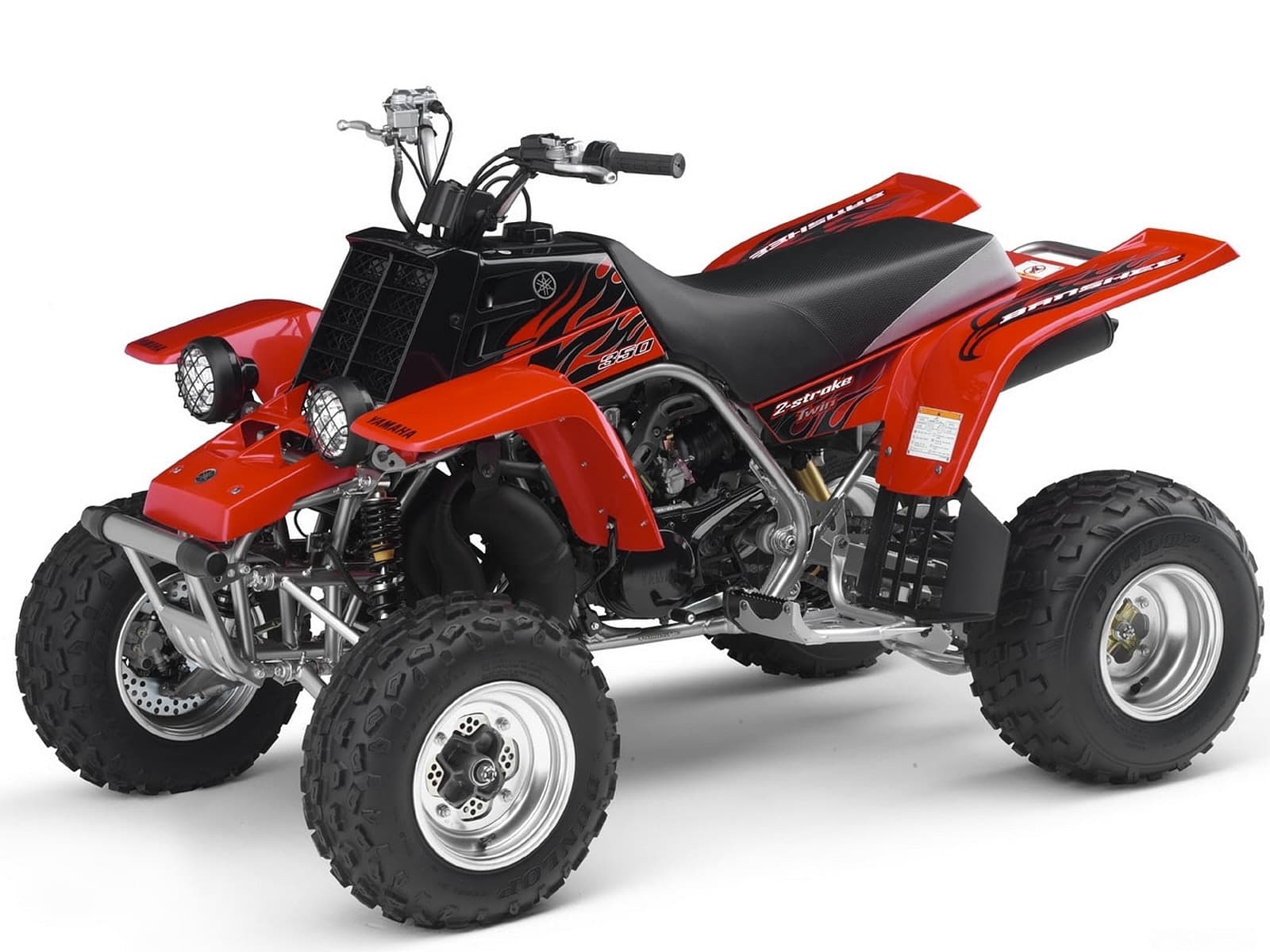
The TRX 250R Today: A Still-Coveted Classic
Though it’s been out of production for over 36 years, the Honda TRX 250R is still a staple among ATV enthusiasts. You’ll find it in vintage racing events, private collections, and even some amateur races where it holds its own against modern machines.
Restorations are common, and some reach remarkable levels of detail. With high-performance engine kits, upgraded suspension systems, and custom bodywork, vintage TRX 250Rs can be transformed into competitive machines once again.
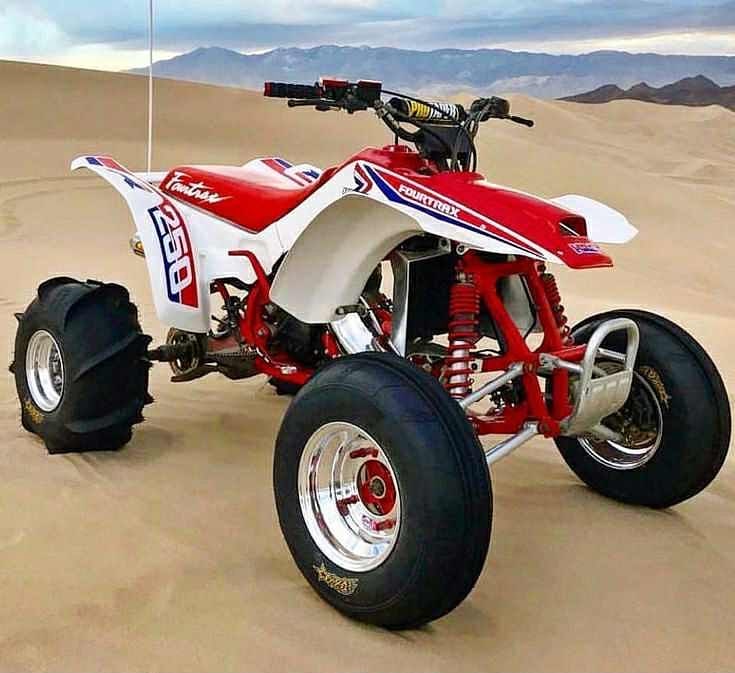
Honda TRX 250R: A Living Off-Road Legend
The Honda TRX 250R is more than just a high-performing ATV—it’s a symbol. It represents a time when raw performance, mechanical simplicity, and rider passion drove machine development. Its success stems from intelligent engineering, its race-oriented design, and a loyal community that keeps its legend alive.
Even though Honda stopped producing it in 1989, the TRX 250R remains a cornerstone of the off-road world—a timeless classic that still dominates, not with modern features, but with enduring excellence. Today, it continues to win over riders who praise its performance and tuning potential. Its legacy lives on, making it a true off-road legend.

